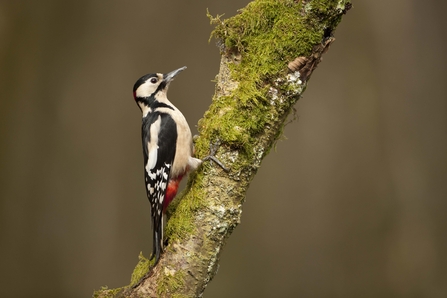
©Mark Hamblin/2020VISION

©Mark Hamblin/2020VISION
This tranquil haven near Tring has been a nature reserve since the 1940s and is wonderful to visit at any time of the year. In spring, you can find plenty of woodland flowers from violets and primroses to wood anemones and lesser celandines. Listen out too for the woodland birds calling and claiming their territories for the breeding season.
Explore the reserve and surrounding area with our Tring Park Wild Walk. Starting in Tring this 10km circular walk takes in Dancersend nature reserve and the Ridgeway National Trail.
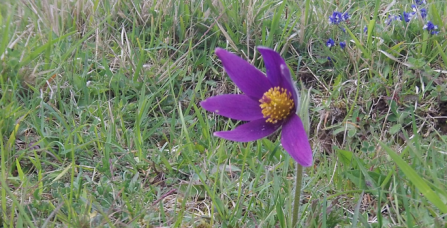
Pasqueflower by Wendy Tobitt
This steeply sloping nature reserve near Goring-on-Thames is one of the few places to see a pasqueflower. The purple pasqueflower is now a rare plant in the UK, restricted to just a few chalk and limestone grasslands, including Hartslock. Steeped in legend, it usually flowers around Easter, so is known as the 'anemone of Passiontide'.
The reserve is worth a detour from a walk along the nearby Thames Path for the magnificent views over Goring Gap. Sit and watch the red kites soar overhead. Later in the spring the chalk grassland fills with orchids and other wild flowers, which attract plenty of butterflies and other insects, so make a note in your diary for a return visit.
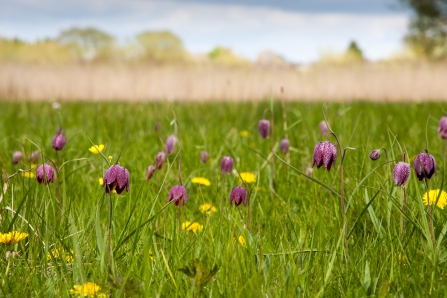
Iffley Meadows by Michael Brown
This sweep of floodplain meadows on the banks of the Thames sits just a stone's-throw from the centre of Oxford, but is a peaceful haven for wildlife. Each year Iffley Meadows plays host to an incredible wildlife spectacle, as thousands of Oxfordshire's iconic flower, the snake's-head fritillary, cloak the meadows in purple from around mid-April.
Before BBOWT took over management of the nature reserve in 1983, a mere 500 of these flowers could be found. As a result of BBOWT's careful management of the site and controlled grazing, numbers of fritillaries have shot up to over 89,000 in a good year - a huge success story. Look out for the results of this year's count later in April.
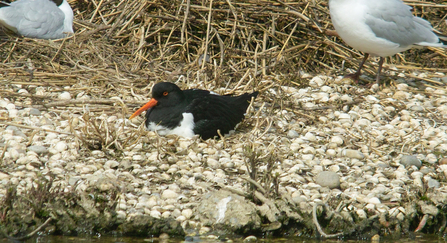
An oystercatcher sits on its nest with black-headed gulls behind. Photo by Derek Moore
This large, flooded gravel pit on the edge of Twyford has several islands that provide quiet spots where common terns and oystercatchers can breed safely away from predators such as foxes.
The scrubby perimeter of the lake is home to blackcaps, whitethroats and other songbirds, some of which come to the UK to breed. Look out also for other nesting wetland birds such as great crested grebe, moorhen and coot. These birds nest among the reeds and other aquatic plants where overhanging branches of willow trail into the shallows.
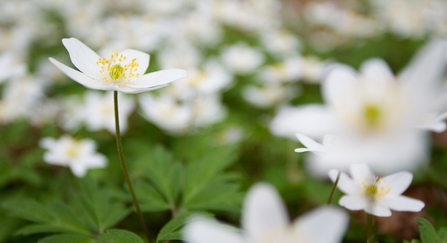
Wood anemone by Mark Hamblin/2020Vision
Set on a Chiltern hillside near High Wycombe with views over the Hughenden Valley, Millfield Wood's beeches are surrounded by an amazing assortment of other trees - whitebeam, wayfaring-tree, field maple, yew and wild cherry.
The site, once owned by Prime Minister Benjamin Disraeli, Earl of Beaconsfield, in the late 19th century, is documented on a map from 1766. The variety of plants, however, suggests that the woodland is much older than this. The floor of a beech wood is normally rather bare in spring, but unusually Millfield Wood has a number of beautiful wild flowers, many of them typical of ancient woodland.
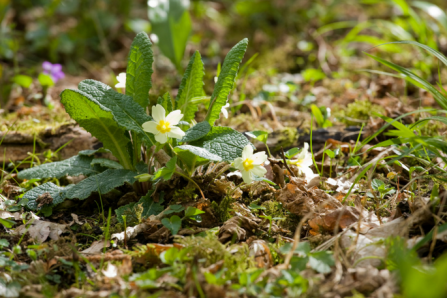
Primroses by Tristain Blaine
Large swathes of tranquil woodland surround a patchwork of meadows and pastures set in the heart of the Pang Valley near Theale in Berkshire. The River Pang meanders through the woodland providing a beautiful setting that is thought to have inspired E. H. Shepard to illustrate The Wind in the Willows by Kenneth Grahame.
In spring, woodland flowers and meadow flowers provide a colourful carpet whilst birds sing their hearts out in the woods.
Sign up below to receive the latest news from BBOWT, tips about how you can help wildlife, plus information on how you can get involved.